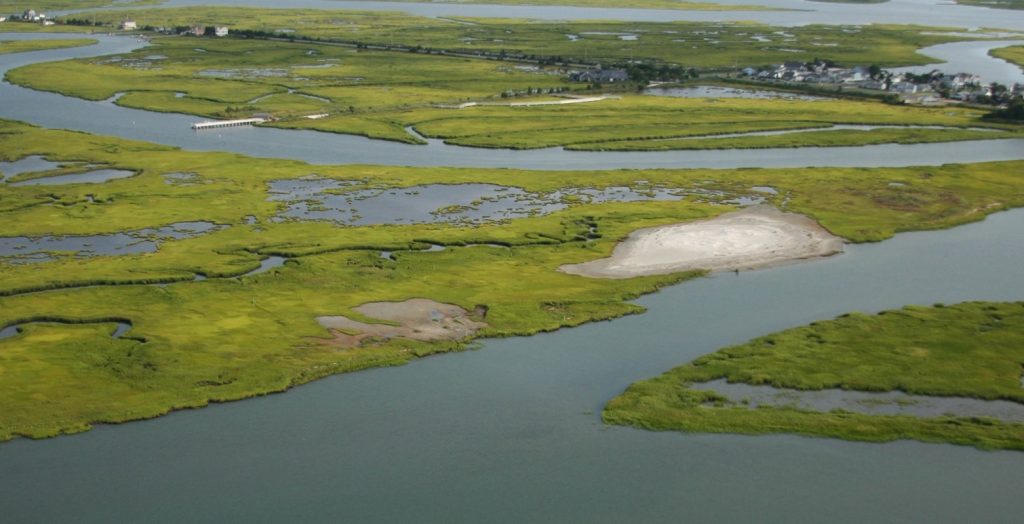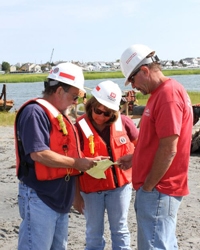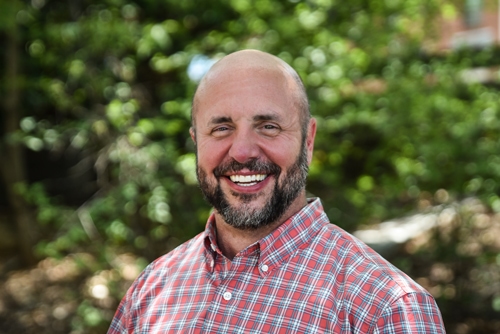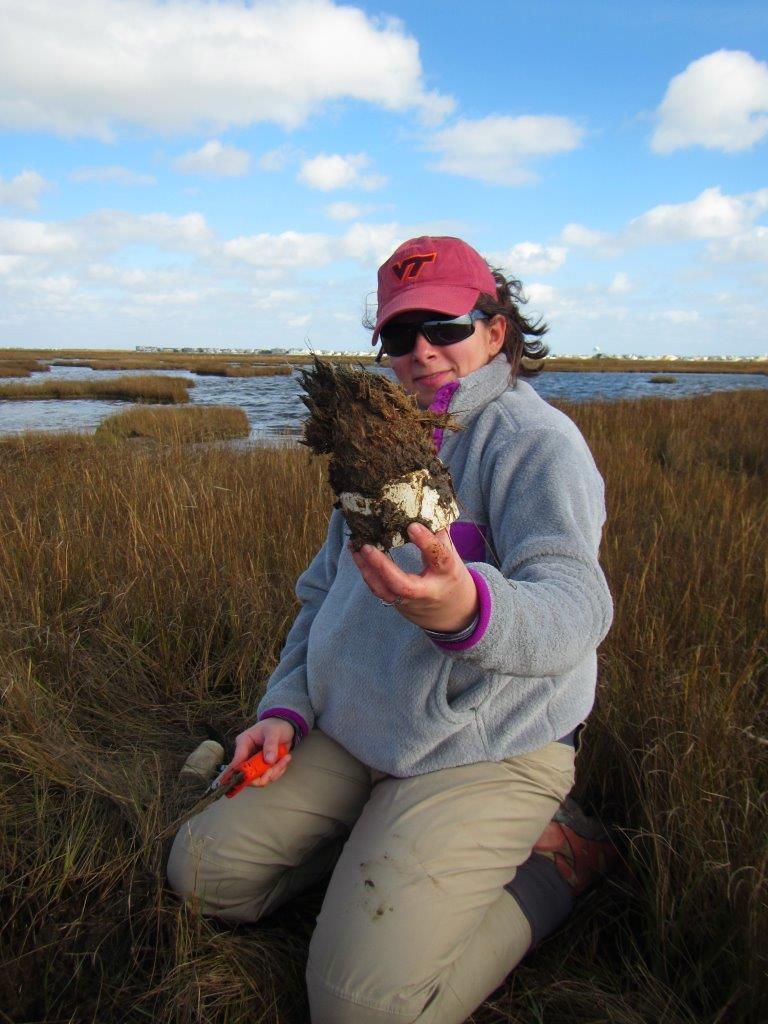The US Army Corps of Engineers (USACE) dredges more than 200 million cubic yards of sediments every year as part of their mission to ensure that ports and navigable waterways remain open to commercial and recreational traffic. In Season 5, Episode 6, we talked with Lieutenant General Spellman, the 55th Chief of Engineers and the Commanding General of USACE, about his bold 70/30 goal to increase the beneficial use of these sediment from about 30% up to 70% by the year 2030. Achievement of this ambitious goal—which support the USACE environmental protection and restoration missions—calls for the adoption of innovative uses of sediment. Our guests are advancing the practice of thin layer placement through the development of new guidelines based on leading practice applications.

In Season 6, Episode 9, hosts Sarah Thorne and Jeff King, Lead of the Engineering With Nature® Program at USACE, welcome Candice Piercy, Research Environmental Engineer at the Engineer Research and Development Center (ERDC), USACE; Ram Mohan, Senior Principal at Anchor QEA and Adjunct Professor at Texas A&M University; and Monica Chasten, Coastal Engineer and Project Manager in the Philadelphia District, USACE. Candice and Ram coauthored the recently published Guidelines for How to Approach Thin-Layer Placement Projects with their colleague, Tim Welp, a renowned dredging expert who passed away in 2021. Tim was the inspiration behind the guidelines, and this episode is dedicated to him. Monica, a guest in Season 1, Episode 8, is an innovator and leading light in the dredging community with responsibilities for keeping open the coastal navigation channels in New Jersey and Delaware. She was an early adopter of Engineering With Nature and one of the first movers of beneficial use of dredge materials.

Thin-layer placement (TLP) is defined as, “the purposeful placement of thin layers of sediment (e.g., dredged material) in an environmentally acceptable manner to achieve a target elevation or thickness” (Berkowitz et al. 2019). As Candice explains, “thin” is a relative term reflecting how dredge material is used now, versus how it used to be handled when it was piled up like mine tailings. “Thin-layer placement really reflects a different approach where we’re purposefully placing the material in relatively thin lifts to accomplish an ecological objective.” She adds, “We look at the ecological function and place sediment in a way that allows the habitat to function as it should, and to provide some benefit. We’re often doing this because the natural process of sediments collecting in our marshes or on our mudflats is not sufficient for it to keep up with rising sea levels. So, we’re replicating Mother Nature in a somewhat clumsy way.”
Early in his career as a coastal engineer in South Carolina, Ram wondered whether dredged material could be used as a resource to improve coastal habitats. Reading some of the ERDC publications by Pace Wilber on case studies using TLP in specific locations “led me to wonder, why couldn’t we use this in a more prevalent manner throughout the dredging program? Back in those days, dredge material was often placed upland, which I thought was a terrible waste of its potential as a true resource.” TLP essentially consists of spraying dredge material—often called sediment, a mixture of sand, silty material, and finer particles—from a dredge or a barge using a pipeline. The material rains down in a very gentle manner. He adds, “That’s a key to this kind of placement. Whether you place it over a marsh or in a subaquatic habitat, this low stress placement method allows it to gently deposit over the existing bottom, making it very conducive to future recovery within two to three growing seasons.”

Beneficial use of sediment is important to Monica: “I get very passionate about sediment and doing the right things with it. Prior to becoming a Project Manager for navigation projects back in 2008, I was working on beach fill projects for the Corps of Engineers where every grain of sediment is incredibly valuable. And then I moved into the navigation world in the back bays in New Jersey where we were basically disposing of material—throwing beautiful sediment away. So, looking at all types of sediment and how we could use it innovatively became a mission for me.”
Monica’s first experience with TLP came in 2012 after Hurricane Irene. The state of Jew Jersey recognized the need to clear channels after the storm and asked Monica and her team to consider TLP to support areas of degraded marsh. “We brought in Tim Welp, whom I had worked with for about 20 years. Knowing what we wanted to do on the marsh was one thing, but how to do it—Tim was the expert.” After Hurricane Sandy in 2014, which was more severe than Hurricane Irene, Monica and her team received their permits very quickly and got to work. “There’s nothing like a storm to really change people’s minds about how urgent it was to try these more innovative concepts and better uses of sediment for coastal resilience.” She adds, “Candice and Tim were on the ground with us trying to figure out, in very cold temperatures, how to thinly place this material.”

The historical practice of taking most dredged sediment and moving it to upland confined disposal facilities is a waste of a valuable resource. As Jeff notes, “We’re essentially taking the sediment out of the system—sediment is supposed to move and be transported by natural processes in various areas of estuarine systems. When we take it out, we’re starving the wetlands that reside in those systems and are typically nourished by sediment. With TLP, these systems are going to be much better off.”

The practice of TLP has been around for some time. After doing a literature search, Candice says, “We realized that a lot of the practice actually lived in the heads of practitioners.” Partnering with Sam Whitin at EA, they hosted a workshop in June 2018 with people from USACE, other government agencies, nonprofit partners, and other NGOs, as well as some small specialty dredging contractors. She adds, “It was just amazing how much knowledge was in the heads of the people working on the ground that just hadn’t been written down and codified into anything that could be handed to new employees working on dredging projects.”
A key takeaway from the workshop was that practitioners wanted some guidelines for TLP, similar to the USACE’s Coastal Engineering Manual or the Shore Protection Manual. So, Candice, Ram, and Tim developed the guidelines based largely on the success of different case studies around the country. In the guidelines, Ram says, “We try to balance telling people how to do things versus listening to nature, following Mother Nature, and adapting. So, while we give a wealth of data on how to do things, it’s equally important to maintain field flexibility and build these projects and adapt with them over time.”
As a practitioner, Monica lauds that approach: “The guidelines are a great starting point for people that don’t know as much about all this historical knowledge. It’s great to start teams off with, ‘Understand what’s in here, and then look at your project and your stakeholders and your partners and see how you can work the guidelines in there’ while not being overly prescriptive.”
From Jeff’s perspective, LTG Spellmon’s 70/30 goal and the new guidelines are game-changing: “I’m excited that we are releasing these guidelines. I talk with practitioners and interested parties all over the country, and I know people have been eagerly awaiting them. They are really going to move the needle. They will be an important game changer—generating more TLP projects and many more opportunities to learn from those projects and continue to advance the practice. A big thanks to Candice, Ram, and our colleague Tim Welp for their leadership on developing these guidelines and a very special thanks to Monica and for her leadership on the ground.”









